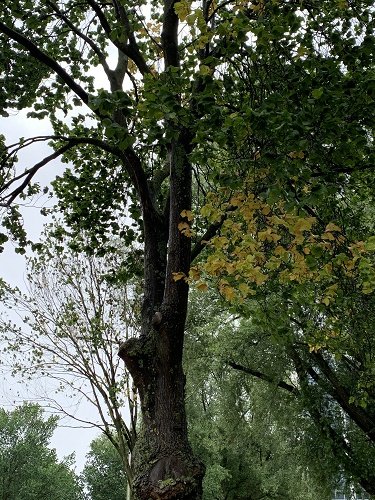Elm Disease
A number of elms in Zoetermeer are affected by Dutch elm disease. Dutch elm disease is expected to spread further in the coming years. The municipality is cutting down the diseased elms to prevent the disease from spreading. Every effort is being made to disturb birds and other animals as little as possible.
Trees with life-threatening diseases such as Dutch elm disease can be cut down without a permit. To prevent infection of healthy elms, diseased elms must be cut down within one month of the disease being detected. The elm spider beetles lay eggs under the bark of elms.
More on Dutch elm disease
Dutch elm disease is caused by a fungus and is highly contagious. The elm sapwood beetle transmits the fungus. The fungus grows in the wood vessels, disrupting the sap flow between the roots and the tree. This deprives the leaves of nutrients and water. This process can happen very quickly and the tree is then doomed.
The spores of the fungus are sticky and attach to elm spider beetles that live on and in the elms. Elm spider beetles can fly from diseased to healthy elms, carrying with them the spores of the fungus. The fungus can also spread through root systems in contact with each other.
Not all elms are susceptible to Dutch elm disease
Arborists have bred several species of trees that are not susceptible to Elm disease. Examples of suitable street trees of these clones are the species:
- 'Columella'
- 'New Horizon'
- 'Rebona'
By manually administering Dutch elm disease to these trees, attempts were made to make the trees sick. However, the disease does not appear to have a hold on the health of these cultivated varieties.
Steel-oak
This species of elm is not susceptible to Dutch elm disease, but is a fairly wide-growing tree species.

